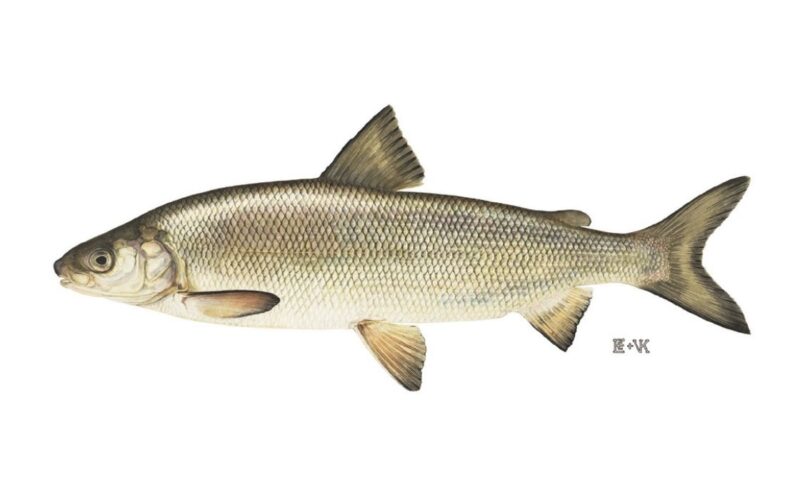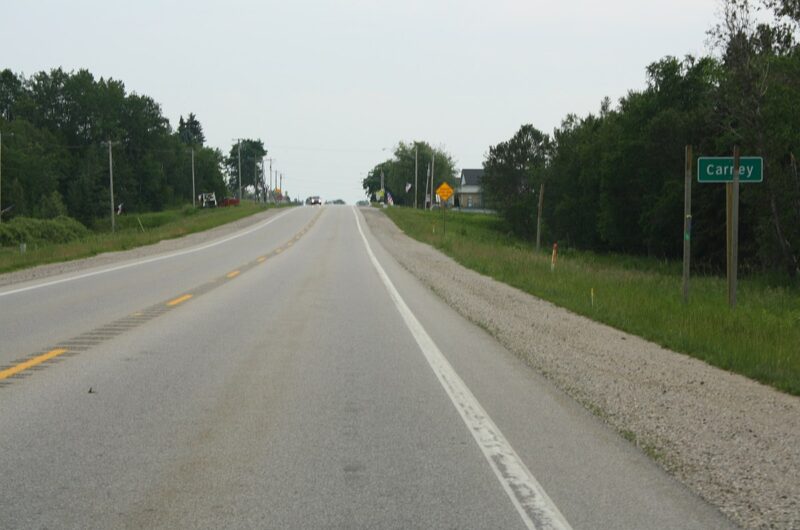Euro-American Commercial Fishing in the Eastern Upper Peninsula – Part Two

“Rural Voices” shares cultural, educational, economic and artistic views of people who have lived and thrived in the Upper Peninsula. Each of our authors in Rural Voices may be living here in the U.P. or living someplace around the globe, but the U.P. is an important part of who they are and what their beliefs and values are today. Rural Voices wants to share the voices of our neighbors and friends about life and experiences in the UP.
The following is the second and final part of our two-part series featuring local historian Russell Magnaghi’s piece “Euro-American Commercial Fishing in the Eastern Upper Peninsula.”
To place the study in national and state perspective, we will review the situation in the early summer of 1870 when there were a little over 27,000 fishermen and oystermen operating in the United States.
Of this total, 1,075 were located in Michigan, and a smaller number were active in the eastern Upper Peninsula. Of this Michigan total, six were male teenagers under fifteen years of age.
Naturally the largest group–16 to 59 years–numbered 1,056, while the sixty-and-over group numbered a mere thirteen. Some 57.3 percent or 616 were American-born, while the remaining 459 were immigrants: 192 were British Canadians (17.8%); 73 were Irish (6.7%); 61 were German (5.6%) while the remainder were nearly half the size of the first two groups: 34 Swedes (3.1%); 28 English and Scandinavians (2.6%); 22 were Scots (2.1%) and a lone Frenchman brought up the end.
Commercial fishing usually involved a group of men who became partners. However, families joined in as a group as well, as we can see when we look at the Endress family. Carl W. (1823-1901), the patriarch of the family, was born in Germany where he trained as a shoemaker and plied his trade.
Then in 1854, he and his wife, Marie, immigrated to the United States and settled at Two Rivers, Wisconsin where he shifted his occupation from shoemaker to fisherman. During these years Endress learned the fishing business.
In the spring of 1871 he moved to Sault Ste. Marie where he would be within easy reach of the excellent fishery of Lake Superior. Emil G. who was fifteen years old in 1871 had been learning the fishing business and moved with his parents and brothers to the Soo. Here the family formed a partnership known as C. Endress & Sons.
Around this time Emil went to Grand Marais as the first Euro-American fisherman to initiate commercial fishing there. Members of the family remained at Grand Marais and eventually celebrated their centennial of being in business. C. Endress & Sons was also found at Whitefish Point and at other locations on Lake Superior. Eventually their fishing fleet was valued at $70,000, which was a considerable sum for that time, and iced fish was shipped to Chicago.
A bigger player in Great Lakes fishing was A. Booth & Company headquartered in Chicago. For many years they not only dominated Great Lakes fishing but that of the two coasts as well. In 1898, C. Endress & Sons was sold to the Booth Company.
Emil became a stockholder in the company and manager of the Booth enterprise at Sault Ste. Marie and elsewhere. The family changed with the times and as fishing declined at Grand Maris, family members shifted to shipping petroleum products.
In 1910–the high point of immigration in the Upper Peninsula–we find a few immigrants engaged in fishing in Chippewa County. One of the reasons for a lack of involvement might be that they needed a substantial down payment investment to purchase a boat and fishing equipment plus they had to know the fishing areas.
There were twenty-four immigrant fishermen. There were also two French Canadian fishing laborers, one English Canadian tug boat operator, and in the net mender category there were two English Canadians and one French Canadian.
To the west of St. Ignace there were a number of Irish immigrants who were fishermen. They were part of the Irish settlement in the northwest portion of the Lower Peninsula who had also gotten into fishing, and eventually settled on Beaver Island and played a role in this area in the field of fishing, but also sold diluted whiskey to the Native Americans.
In 1895 the State Fish Hatchery was operated by the State Board of Fish Commissioners and the Federal Bureau of Fisheries built a hatchery on the St. Mary’s River to the north of the canal. Then four years later they constructed a pond system. Between 1900 and 1910 the Bureau planted in Lakes Superior, Huron and Michigan twenty-five million whitefish and eight million trout.
The various port communities like St. Ignace, Mackinac Island, Manistique, Sault Ste. Marie, and Grand Marais were excellent transshipments points to Milwaukee, Chicago, Detroit, and Cleveland for the fish caught and processed in the community.
In the early days, fish sold at an incredible 6 cents per fish, with most local people buying only fish weighing between ten and fifteen pounds. Throughout its history, the commercial fishing industry was plagued by fluctuating periods of boom and bust. A first there was an abundance of fish located close to shore and boom times followed. As technology improved the fish were cleaned out near shore and fishermen were forced to move farther out on the lakes.
In the spring of 1910, Whitefish Point was an isolated center of the commercial fishing industry in eastern Lake Superior. Forty out of a total of fifty people living there were engaged in some aspect of commercial fishing. Ten were Euro-American fishermen while others were employed on steam boats and tugs: cook (4), fireman (2), engineer (4), deck hand (2), sailors (10), watchmen (6) and wheelman (2).
The Les Cheneaux Islands to the east of Mackinac Island were home to a number of commercial fishermen. Anthony Hamel was the first commercial fisherman in the area. He came to the islands in 1869 when he was 15 years of age where he first worked at odd jobs.
In the mid-1870s he was employed by Coates and Arnold and fished in the vicinity of Strongs and Boot Islands. Finally, in 1877 he had located a seasonal camp on Boot Island and started his own fishing business. He fished primarily for lake trout and whitefish in the eastern waters of Les Cheneaux with pound nets set in the vicinity of Strongs, Boot, and Gravelly Islands and at Middle Entrance. He used Mackinaw boats and other light sailing craft to travel to and from the fishing sites.
As profits were made, Hamel became more established and purchased the steam tug, the “Joker.” In the winter he ice fished and developed an ice harvesting business so that he could pack and ship his iced fish during the summer and fall. In the winter the family fished off shore for lake trout in the vicinity of Goose Island. They traveled out by dog team, and sold their catch to Hossack Store which shipped them out once a week.
In the fall of each year the family moved to Cedarville or Hessel so the boys could attend school. In 1908 the family opened a fish store in Cedarville. In the warmer months the family moved back to Fishery Point.
Hamel’s five sons worked with their father as fishermen and in other area jobs. In the fall of 1907, Harrison and his brother Robert opened the Cedarville Boatworks. They built boats until 1913 when Harrison moved to Cleveland and then to Detroit as a building contractor. One of the boats they built was the Ferro in 1912 which served the family many years as a commercial fishing tug. The Ferro transported catches of trout and whitefish to the Cheboygan market and occasionally carried passengers who had business there.
The first boats were powered by sail which limited their range and made gathering nets by hand very difficult. By the late 1890s the first gasoline engine was built by the Lake Shore Engine Works of Marquette and was accepted by fishermen.
Eventually, diesel engines were purchased for fishing boats. All of these engines provided greater range and safety and allowed the crews to mechanically haul in the nets.
Life for the fishing crew was difficult. The fishing season lasted from April 1 or whenever the ice broke up, until January when the lakes froze over. There was a brief rest in the autumn during the spawning season. The day began at two in the morning and lasted until they returned to port at four or five in the afternoon.
Until the introduction of onboard kitchens, the fishermen had to eat cold, packed lunches. Sudden storms could endanger the lives of the men or destroy valuable nets. The pay varied over the years. The early commercial fishermen hired by white fishermen were paid in half of the take and fishing netting. Later white crews were paid a dollar per day and eventually this was increased to two dollars a day.
There were good and bad economic times for the early twentieth century fishermen. For instance, during World War I, when rationing was in force, fish were promoted by both the United States and Canadian governments as the protein food of choice.
As the United States Food Administration promoted in 1918, “Save the products of the Land. Eat more fish–they feed themselves.” Unfortunately, this short-lived campaign backfired on the environment. In an effort to quickly win the war, large quantities of fish were taken with detrimental future effects.
During the 1920s and early 1930s there was intense competition among the fishermen. This ended with the coming of the Great Depression beginning in 1929. At four cents per pound it was impossible for many fishermen to remain in business.
The decline in the industry began in the late 1950s. Although between 1959 and 1964 there was a brief boom as boats and crews increased in size, but the end was in sight. Many of these fishing businesses were family affairs and there were fewer family members interested in entering the business. In 1965, the Michigan Department of Natural Resources placed a series of regulations on commercial fishermen.
There was a total ban on herring fishing, a complete ban on the use of large mesh gill nets, limits were set on chub, whitefish could not be taken, and limits were placed on the season and areas to be fished. In 1968 the state of Michigan through the Department of Natural Resources began to promote sports fishing to the detriment of commercial fishing.
There were foreign problems coming from Canada. The Canadian government subsidizes crown corporations such as Northern Native Fishing Corp, which helps create and sustain new fisheries in northern Canada and Freshwater Fish Marketing Corp., which promotes Canadian fish in international markets. Other subsidized programs include pensions and health care for Canadian workers.
In the United States, the Sea Grant programs help coastal communities including those on the Great Lakes promote Michigan’s commercial fishing industry. However, there is a limit of the program’s effect. The invasive zebra mussel species eats the same small organisms that whitefish eat.
This has probably led to a decline in the size of whitefish. Another problem is VHS, which causes internal bleeding in the fish’s tissue, which entered the Great Lakes and the government is trying to halt.
The decline in Michigan’s fishing industry began in 1968 when the Department of Natural Resources (DNR) decided to promote sport and recreational fishing on the Great Lakes and limit commercial fishing. The DNR began by limiting commercial fishing by creating quotas on pounds of fish taken from the Great Lakes.
In the 1960s, the number of commercial fishing operations peaked around 1,500 and then dropped to sixty in 2006. Of this number, only thirty of them were active at that time and have at least one boat registered with the DNR. As John Gauthier, owner of Gauthier-Spaulding Fish Company in Rogers City and a former director of the Michigan Fish Producers Association noted, “During the ‘60s we had a lot of construction workers that were weekend fishermen. But after the quotas, a lot of fishermen left because it wasn’t profitable.”
In the late 1960s there was a botulism scare which called into question the safety measures used by the fishing industry. The scare was caused by a buyer who left smoked fish unrefrigerated in his car and botulism spores which are naturally in fish grew and made the fellow ill. Then bans were imposed on commercial fishing for lake trout, salmon and other Michigan sports species during the 1970s. In the following decade, due to contaminants in carp the market was eliminated.
In the 1970s the Native Americans successfully fought for fishing rights especially under the Treaty of Washington of 1836. They eventually won their case and the end of the Euro-American commercial fisherman was evident. Finally, a 2000 court order which designated tribal and state waters, lowered fish quotas and limited or banned all gill nets put most commercial fishermen out of business.
As a result, by the late first decade of the 21st century, the State of Michigan licenses approximately forty-five commercial fishermen and the five tribes managed by the Chippewa-Ottawa Resource Authority (CORA) and the three tribes belonging to the Great Lakes Indian Fish and Wildlife Commission (GLIFWC) support almost 150 commercial fishing operations. Today, approximately fifty percent of the Great Lakes commercial catch in Michigan waters is currently harvested by tribe-licensed fishing operations.
In conclusion, the town of Naubinway in the central southern Upper Peninsula remains a link to the commercial fishing past. It has one of the best natural harbors on the northern shore of Lake Michigan.
In the late 1800s when the lumber industry declined, it was replaced by fishing, which became Naubinway’s main industry. Today, commercial fishing remains a major part of Naubinway’s economy. Visitors can watch the fishing fleet leave the docks to fish the waters of Lake Michigan and then purchase fresh fish later in the day.
Today, visitors come from miles to enjoy a whitefish meal at restaurants throughout the Upper Peninsula.






Wonderful historical article
A very interesting article many of those names of fisherman that have passed brings back memories to me. I am one of the last fisherman, probably from the Hamel family for sure. My son’s may continue when I’m gone that will be up to them. I along with my partner at Dutcher were put out of our area in Cedarville in 1985 with a treaty being the cause of it didn’t really hold hard feelings against the natives Americans it brought us to Bayport Michigan, where we succeeded in helping other fisherman harvest whitefish I fish in the outer Saginaw Bay for Bayport Fish Company for several years now I am fishing on the inner Bay on a license that was purchased approximately 35 years ago and we’re gonna fish until we can’t fish anymore a very interesting article and I appreciate the research and the work that I was put into it. It brought back great memories thank you .this being Jim Hamel owner operator, Hamel and sons fishery out of Bayport Michigan.
Anthony Hamel was my grandfather this year marks his death 100 years ago this fall our family has fish for whitefish in Lake Huron for 156 years and counting